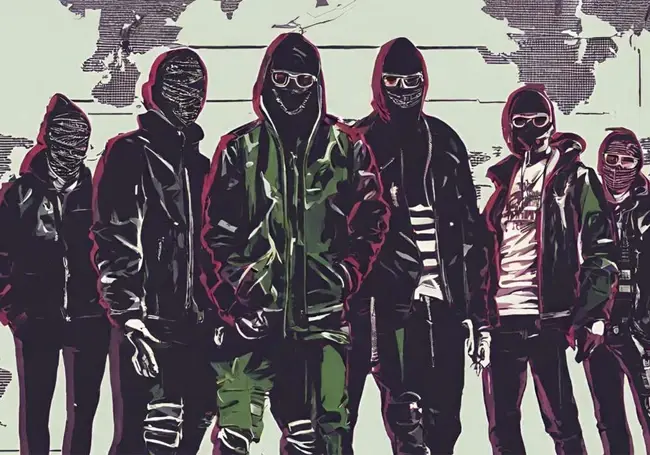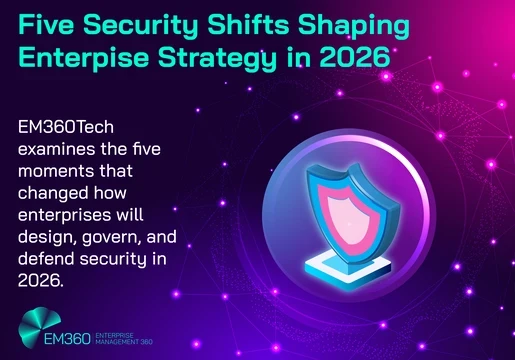The digital age has revolutionised the way we access information, streamline business and connect to other people. But along with all the positives it brings, technology has also opened doors into all aspects of our lives that criminals can exploit.
The stereotypical impression of a ‘hacker’ or ‘cybercriminal’ often features a lone hooded figure operating from a basement, preying on the elderly through phone and email spam.
However, cybercrime is big business. There are a range of powerful hacker groups with intricate structures and sophisticated tools that pose a significant threat to individuals, businesses, and even entire nations.

What is a hacker group?
A hacker group is an organization that collaborates to commit cybercrime. They operate like a typical business with a structured hierarchy, with members specializing in different areas of cybersecurity expertise.
Also known as a ‘cybercriminal gang’ many hacker groups work in similar ways, with each of their attacks demonstrating similar characteristics. Some of the most common characteristics of hacker groups include:
- Organization. They operate with a defined leadership structure, often with individuals specializing in specific tasks like hacking, and financial management.
- Collaboration. Members work together to achieve common goals, leveraging each other's skills and resources.
- Sophistication. They often possess advanced technical knowledge and employ sophisticated tools and techniques to carry out their attacks.
- Financial motivation. The primary goal of most hacker groups is financial gain, achieved through methods like ransomware attacks, data breaches, and online fraud.
- Global reach. Hacker groups operate across international borders, making them difficult to track and apprehend.
Hacking groups pose a significant threat to individuals, businesses, and even entire nations. They can disrupt critical infrastructure, cause significant financial losses, and compromise sensitive data.
What do hacker groups do?
A hacker group's primary goal is usually financial gain, which is achieved through various malicious activities that exploit vulnerabilities in computer systems and networks.
A typical attack comes in multiple phases. The initial phase involves gathering information about potential targets. This might involve using publicly available data, infiltrating social media accounts, or deploying malware to gather system information and identify weaknesses.
Once a target is chosen, the gang meticulously plans the attack. This may involve developing custom malware, identifying entry points, and devising strategies to evade detection.
Hacker groups constantly evolve their tactics to stay ahead of security measures and avoid detection. This includes developing new malware strains, employing encryption techniques, and shifting their targeting strategies.
The most common cyber attacks used by hacker groups
1. Malware
Malware, short for malicious software, is any software program or code intentionally designed to harm a computer system, network, or data. Unlike legitimate software, malware is designed with the sole purpose of causing harm, disruption, or financial gain for the attacker.
This harm can manifest in various ways, from stealing sensitive information and disrupting operations to encrypting files and demanding ransom for decryption. Malware can target individuals, businesses, organizations, or even critical infrastructure on a global scale.
Common types of malware include:
- Viruses: Self-replicating code that can spread from one computer to another, infecting them and causing damage.
- Worms: Similar to viruses, but they don't require a host program to replicate and spread.
- Trojan horses: Disguise their true purpose as harmless software, tricking users into installing them, and allowing attackers access to the system.
- Spyware: Steals sensitive information, such as passwords, browsing history, and keystrokes.
- Ransomware: Encrypts files, preventing users from accessing their data and demanding a ransom payment for decryption.
2. Ransomware
Ransomware is a specific type of malware designed to hold a victim's data hostage. Ransomware uses encryption algorithms to scramble the victim's files, making them inaccessible. This can affect critical business documents, personal photos, or any other data stored on the infected device.
Once the files are encrypted, the attackers present a ransom demand, typically in the form of cryptocurrency, to provide the decryption key and regain access to the data.
Ransomware attacks can cause significant disruption to individuals and organizations. Businesses can lose access to essential data, leading to operational delays, financial losses, and reputational damage.
The threat of permanently losing valuable data creates substantial psychological pressure on victims, making them more likely to pay the ransom. Attackers are constantly evolving their tactics, developing new encryption methods and employing "double extortion", where they not only encrypt data but also steal it, threatening to leak it publicly if the ransom is not paid.
3. Phishing
Phishing is a type of social engineering by cybercriminals to steal sensitive information, such as passwords, credit card details, or personal data, from individuals or organizations. Phishing is most commonly achieved through email but alternative methods including text, calls, and social media are on the rise.
Attackers disguise themselves as legitimate entities, such as banks, social media platforms, government agencies, or even trusted colleagues. They craft messages that create a sense of urgency or offer attractive incentives to encourage the victim to click on malicious links or open attachments. These links often lead to phishing websites designed to look identical to the real ones, tricking the victim into entering their personal information.
Once the victim enters their credentials on the fake website, the information is captured by the attacker and can be used for malicious purposes including financial fraud, identity theft and spreading malware.
4. DDoS attacks
A Districted Denial-of-Service (DDoS) attack is a malicious attempt to overwhelm a website, server, or network with excessive traffic, making it unavailable to legitimate users.
Read more: 3 Million Smart Toothbrushes Turned into Botnet for DDoS Attack
Most Notorious hacker groups
Delve into the dark side of the digital world in this list as we explore ten of the most notorious hacker groups, exploring the string of cyber attacks that made them infamous.







Comments ( 0 )